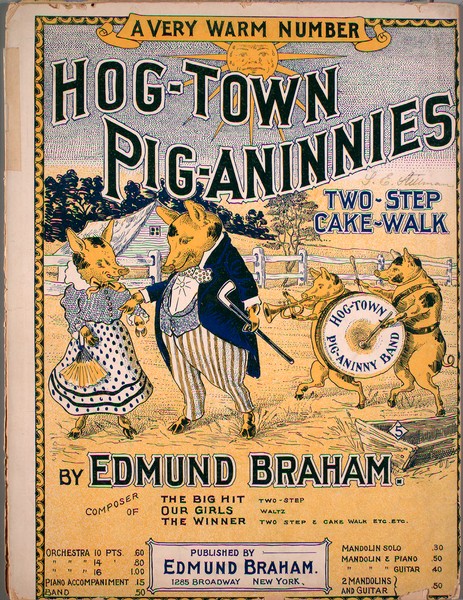
Toronto artist Shannon Gerard won international attention a few years ago when she decided to crochet life-size "dinks and boobs" as cancer-detection training tools and general cancer-awareness raisers. And she won further local Toronto attention with the project when a university bookstore had a related display removed from its store.
But while that "dinks and boobs" project (which I found kinda cute, actually) might be what some best know Gerard for, the fact is that she has been active on the zine, printmaking and graphic-novel fronts for many years before and since. Recently, she blew up some of her zine characters to life size, using wheatpaste to affix them to the walls of Open Studio's gallery. She's also, over the coming year, using large-scale wheatpaste to create slow-motion animations on a wall outside YYZ gallery.
And across it all, she's still keeping up the yarn-work with her awesome xmas gift idea, "Plants You Can't Kill."
Last month, Gerard took some time to chat with me about her multifacted practice, from crochet to cartoons and beyond. A condensed version is out in today's National Post. An excerpt:
Q: Your new book, Unspent Love, is prefaced by the quote: “People tend to create small towns wherever they are.” Why?
A: That quote’s been important to me for a long time. It’s from Kathleen Norris, one of my favourite writers. Basically, Unspent Love shows the people in my life who form what would be a small town — even though we live in this big city. I like that idea of being located in a place really deeply, and I wanted to put it at the beginning of the book because it was such a guiding principle to what the stories ended up becoming.
Q: So who are these particular people?
A: Well, there’s two stories that feature my sister. One has an older version of myself. Mostly friends, a couple of ex-boyfriends. My son, which is not unimportant.
I wanted to be really specific about using particular people, because it’s related to what the stories are about. But also I liked the idea of these particular people being like avatars for anybody’s experience. I kind of hesitate to use the word “avatar” because the movie and the word is so techie, where this stuff is not technical at all. I just wanted, through the lens of my own experience, to talk about human experience in general.
You can read the rest of the interview and find links to Gerard's comix and animations here.
** ** **
Also, as a bonus, I'm including below something I couldn't find space for in the article: some of Gerard's further thoughts on crochet--something, it should quickly become apparent, that I know nothing about:
Q [You mentioned crochet is very mathematical.] How is crochet about math?
A Oh, it’s so mathematical. It also relates to printmaking. Basically, every point of anxiety and every point of interest that I have in making art is addressed in crochet.
So you’re just doing one thing and you do it repetitively. And you kind of build a three-dimensional or two-dimensional kind of plane based on repetition of the same thing and if you introduce a mistake or a change or a new stitch or you double up, within a few rows or accumulations of pattern it introduces geometry. So it’s like non-Euclidian hyperbolic space. But it’s, like, conceptualized in this material form.
And I’ve used it in the past to understand space or understand problems. Like I had a health problem about a year and a half ago and I crocheted this uterus to kind of start to think about that. I thought my fallopian tubes were like, connected to this ovary but now you're telling me there’s this gap? So I was trying to understand that kind of abdominal cavity so I just crocheted the whole thing and I could suddenly conceptualize exactly where the fault was in my own anatomy.
It’s like, you can model any idea but you can also model any shape. So you can just use it as a process to get at an understanding of how to navigate the world and think about the interiors of things. So it’s mathematical in that way and it’s just like a problem solving kind of process.
Q Cool.
A It’s so… I can nerd out about it forever.
Q You also made recently these "plants that don’t die" out of crochet. Is that because you’ve slayed a lot of plants?
A Yeah. My friend Lauren is this amazing gardener has these huge lighted shelves that are filled with plants, and her house smells amazing. I’m like, so jealous of that. And my mom is an avid gardener. That’s what she does at the end of the day to unwind. She makes this beautiful space that is so cleansing and so great. But I can’t do it! I’ve tried so hard to do it in the past and it is not possible for me to keep plants alive.
So that’s another thing about crochet, it really mediates a lot of anxieties. I feel like it’s very soft and it’s very relatable and often humorous when you use it to make these humorous statements. People are always at my table at craft fairs laughing or talking and it creates a lot of joviality--a lot of really fun conversations.
But for me in everything there’s also essentially anxiety. Like, one craft fair when I had those “Plants You Can’t Kill”—also “Plants You Can’t Kill” has an internal rhyme that is really satisfying—so I had them out and then this woman picked them up and said, “Shouldn’t you call these plants that don’t grow?” and I was like "Um, yeah," and I felt like so blown away, like, “Oh, shit! Everything I do is about failure!” I said, “Yeah, but ‘don’t’ doesn’t’ rhyme with ‘plant”. And she just walked on.
Then for the whole day I was obsessed with that idea, like “Oh my god, they don’t grow, they don’t grow!!! Nothing I do grows!” Ha!
Q Yeah it’s easy to take that stuff to heart, I guess. But that’s really interesting. Sounds like a good practice.
A It’s such a good practice. Some people are like “Oh, I’ve been knitting for years and I can’t crochet.” And others are like, “Oh, don’t you LOVE crochet?” I think people have a relationship to it that’s also anxious, like “I can’t do that! It’s too hard!” or “You're so fast!” It mediates so many human conversations.
I wanted to make sure I posted these stories because (a) I never thought about crochet this way (b) I love anything that helps people talk about anxiety (c) the gap between the ovary and the fallopian tube has always seemed a mystery to me as well and (d) I struggle to keep plants alive too, and can easily see how that could become pathologized by a simple comment. Woot!
(Image from Shannon Gerard's Open Studio installation courtesy of the artist)
Read More......
 I think even my computer wants me to start my holiday, because it auto-published this post a few times before I even typed anything.... soooooo.... HAPPY HOLIDAYS! Or just at least HOLIDAYS!!! I hope ya'll get some time off. I'm planning on trying to take off until January 3. If you're in dire need of online art fellow-feeling in the meantime, I recommend the following:
I think even my computer wants me to start my holiday, because it auto-published this post a few times before I even typed anything.... soooooo.... HAPPY HOLIDAYS! Or just at least HOLIDAYS!!! I hope ya'll get some time off. I'm planning on trying to take off until January 3. If you're in dire need of online art fellow-feeling in the meantime, I recommend the following:








